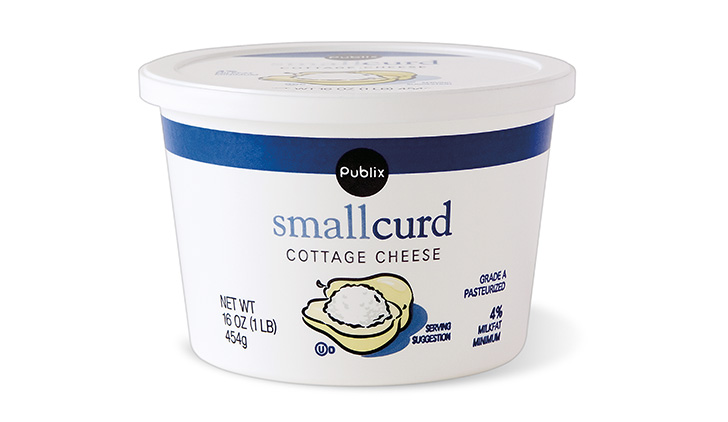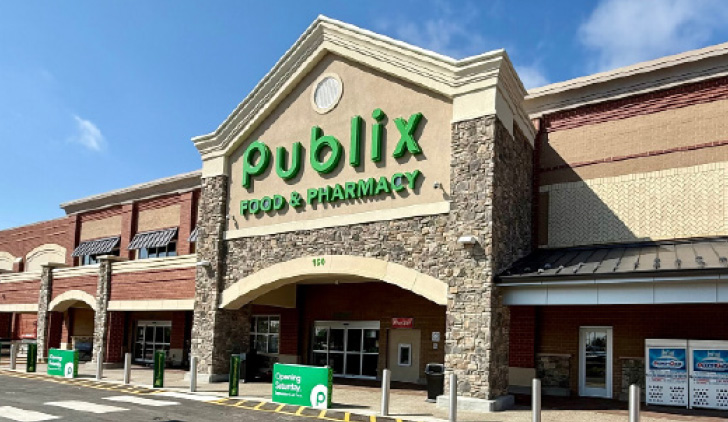
Since the early ’80s, we’ve been proudly making our award-winning cottage cheese.
Varieties in 16- and 24-ounce containers
- Low-fat
- Fat-free
- 4%
Read through the 8 steps we follow to make our cottage cheese.
Step 1
The journey of our cottage cheese starts with the arrival of cold, fresh milk from a dairy farm. Delivered in 5,500-gallon tanker loads, the milk is tested for quality and then pumped into our fresh milk storage tanks, ready to begin its transformation.
Step 2
The fresh milk is separated into cream and fat-free or skim milk. The skim milk is heated to 171 F for pasteurization and held at this temperature for 16.5 seconds. It’s then quickly cooled and stored at about 35 F until used, typically the following day. The pasteurized skim milk, known as “skim for cheese,” is what we use to produce cottage cheese curd.
Step 3
Next, the “skim for cheese” is pumped into a 4,000-gallon production vat where culture bacteria are added. These cultures acidify the skim milk, and the milk solids begin to thicken. Throughout this process, the pH and texture are closely monitored for quality.
Step 4
When the proper pH is achieved, the cheese in the production vat is cut lengthwise and crosswise using a 3/8-inch wire for small curd and a 1/2-inch wire for large curd, resulting in cubes with a texture similar to gelatin dessert. The production vat temperature is then raised to 140 F. This causes the dairy solids in the cheese curd to shrink and expel whey — the liquid part of the milk — which causes the curd to sink to the bottom of the production vat. A 4,000-gallon production vat of “skim for cheese” produces about 1,800 gallons of cheese curd.
Step 5
The cottage cheese dressing is made by batching and blending fresh milk, cream and salt. It’s pasteurized, homogenized and stored in a refrigerated tank until needed. This liquid component gives the cottage cheese a distinctive flavor. It’s combined with a specific ratio of cheese curd to achieve the proper texture and moisture.
Step 6
The curd and whey are separated using a drainer. Then, the curd is pumped into a washer-cooler, where it is rinsed and cooled for about 90 minutes. The curd is then drained and dropped into a large tank known as a creamer. In the creamer, the curd is slowly and gently stirred to prevent it from breaking. The dressing is then added to the cheese curd.
Step 7
The dressed cottage cheese is sent from the creamer to the filler designated for 16-ounce and 24-ounce containers. Once filled, they are sealed with a plastic film and a lid. Each container is printed with a sell-by date and other production details. At the same time, a high-speed camera inspects every container to verify correct packaging and coding.
Step 8
After final quality and food safety checks, the cottage cheese containers are cased, palletized, loaded onto trucks and shipped to our distribution centers.
About the Lakeland dairy plant
The Lakeland dairy plant, which opened in 1980, spans 280,000 square feet, employs more than 300 associates and has 12 production lines. Publix has dairy plants in Lakeland and Deerfield Beach, Florida, and Atlanta. Our Lakeland dairy plant is the only one that produces products like sour cream, yogurt and cottage cheese.


